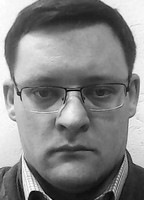Athletic training process design based on transformed ancient and modern ideas of natural science and psychology
Фотографии:
ˑ:
Teoriya i praktika fizicheskoy kultury №10 2017, pp.49-51
Dr.Sc.Phil. S.B. Kulikov
Tomsk State Pedagogical University, Tomsk
The study analyses the role of transformed ancient and modern ideas of natural science and psychology for the modern athletic training process design on the whole and artistic fencing in particular. Artistic fencing means the sport discipline including elements of a single combat and competition with standard appliances being used. We applied analysis of the time factor and its transformation from the objective change measuring tool (Aristotle) to the basis for relativistic understanding of the global processes (Einstein) and basis for subjective perception of reality (Bergson) to differentiate the physical momentary aspect and cultural-psychological activity in the modern artistic fencing. A special emphasis on the timing aspect in artistic fencing makes it possible to identify the core idea of a bout. Process modelling and involved monitoring were applied as the core methods of the theoretical and educational study of the athletic training process. The author came to the conclusion that a special emphasis on timing in artistic fencing must be given to find the lag moments in the opponent-referees-spectators perception system i.e. the temporal gaps in transmission of signals (and responses to the signals) from one or few elements of the system to the others.
Keywords: artistic fencing, timing factor, sport psychology, natural science, sport, ancient heritage, modern natural science.
References
- Bergson A. Dlitelnost i odnovremennost (po povodu teorii Eynshteyna) [Duration and Simultaneity (Concerning the Theory of Einstein)]. Transl. from Fr. by A.A. Frankovskiy. St. Petersburg: Academia publ., 1923, 154 p.
- Kulikov S.B., Podberezhnaya A.A. Kulturno-istoricheskoe vremya i vizualizatsiya fehtovalnogo poedinka v teatre i kinematografe [Cultural-historical time and visualization of fencing duel in theater and cinematography]. Vestnik Severnogo (Arkticheskogo) federalnogo universiteta. Seriya: Gumanitarnye i sotsialnye nauki, 2016, no. 4, pp. 72-82. DOI 10.17238/issn2227-6564.2016.4.72
- Kulikov S.B. Teoreticheskie osnovaniya modelirovaniya kultury poedinka v artisticheskom fekhtovanii [Artistic fencing bout culture modelling: theoretical basics]. Teoriya i praktika fizicheskoy kultury, 2016, no. 7, pp. 55-57.
- Chernykh P.Y. Istoriko-etimologicheskiy slovar sovremennogo russkogo yazyika: v 2 t. [Historical-etymological dictionary of modern Russian language: in 2 p.]. Moscow: Russkiy yazyk publ., 1999, 642 p.
- Einstein A.K elektrodinamike dvizhuschikhsya tel [Electrodynamics of moving bodies]. Transl. from Germ., ed. V.K. Frederiks, D.D. Ivanenko]. Collected research: in 4 Vol. Moscow: Nauka publ., 1965, vol. 1, pp. 7–35
- Amberger J. Ch. The Secret History of the Sword: Adventures in Ancient Martial Arts. Burbank, CA: Multi-Media Books, 1999, 294 p.
- Clephan R.C. The Medieval Tournament. Mineola, New York: Dover Publications, 1995, 240 p.



 Журнал "THEORY AND PRACTICE
Журнал "THEORY AND PRACTICE